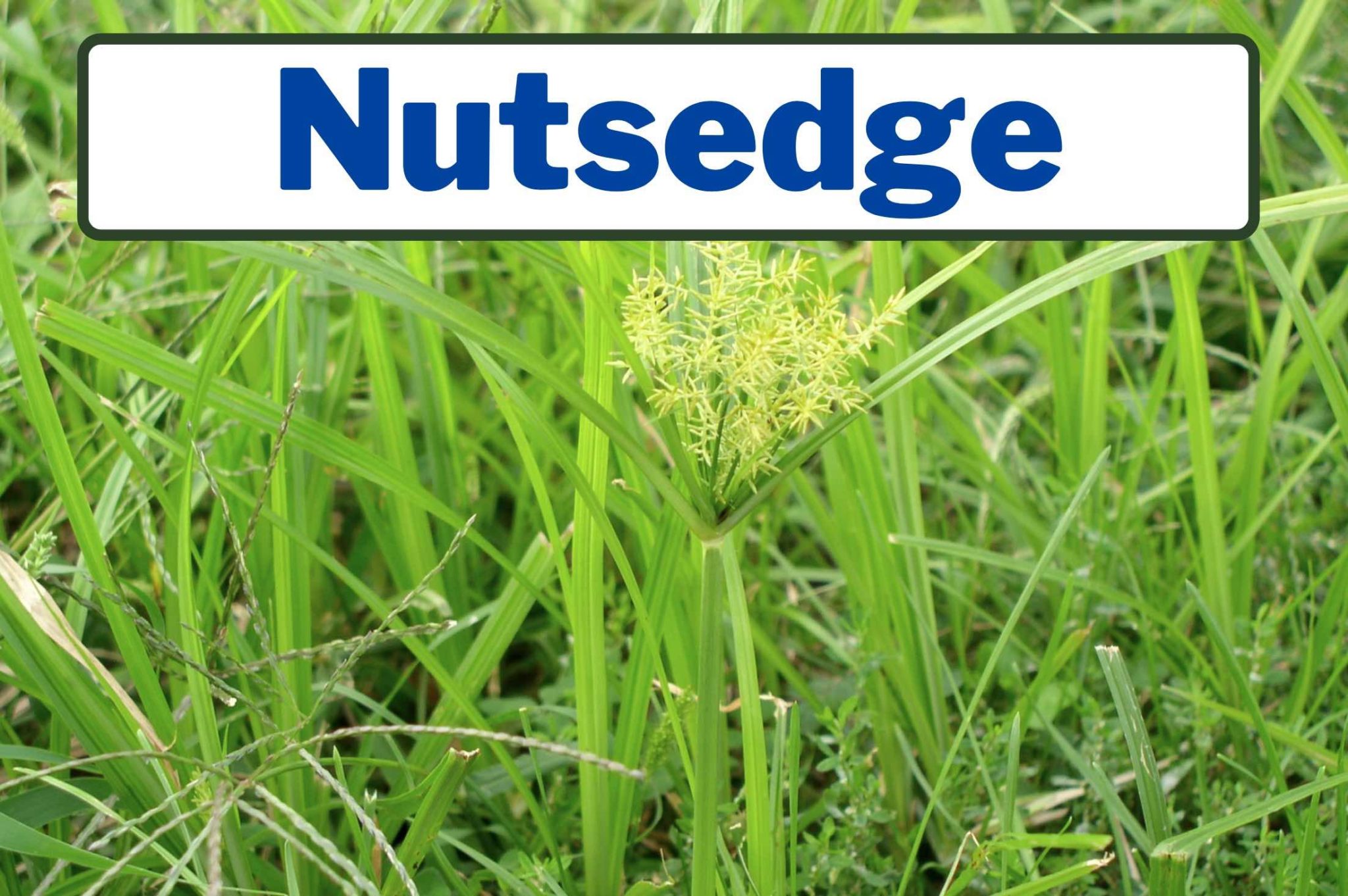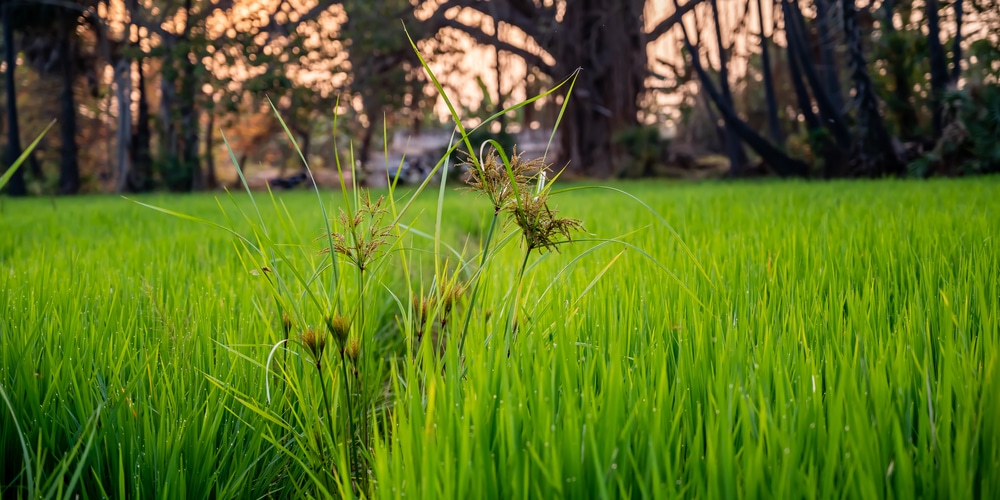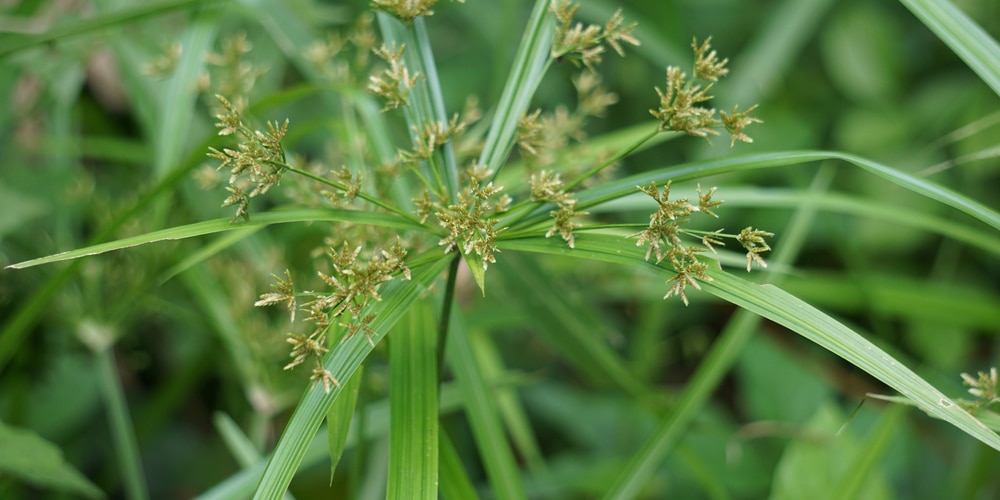Nutsedge, also known as nutgrass, is a grass-like lawn weed that has a lighter green color and can be distinguished from other grasses by its V-shaped stem. This perennial resembles grass, with the exception that it grows taller and faster than turfgrass. It prefers moist soil but will also grow in dry soil and thrives best in hot weather. Let’s look at how to kill nutgrass.
Prevention of Nutsedge

Prevention is an essential way of controlling nutsedge in your lawn. There are several ways of preventing nutsedge from growing and spreading on your lawn, but one of the most effective methods is to prevent seeds from germinating by killing nutsedge seeds. You can use the following methods to kill nutsedge seeds.
You can apply pre-emergent herbicides to prevent nutsedge seeds from germinating on your lawn. Pre-emergent herbicides are chemical herbicides that are used before weeds begin to grow or after they have emerged to eliminate them.
You can also treat unwanted nutsedge weeds with horticultural oil or a synthetic pyrethroid insecticide to kill them, so there is no risk of spreading nutgrass on other plants or grasses in your yard.
How to Kill Nutsedge
Nutsedge is among the most stubborn weeds you may have to deal with on your lawn. The nutsedge seeds are spread by birds, squirrels and other animals that eat the plant and may also be carried on shoes or clothing. This makes these resistant grassy weeds a great nuisance and enables them to spread like bushfire.
Besides, the root system of nutsedge also contains tubers and rhizomes, and each tuber is capable of developing new weeds. However, nutsedge isn’t entirely impossible to kill and eliminate them completely from your garden.
Using herbicide
Nutsedge causes unsightly brown patches on the lawn and is often unwanted vegetation. To control nutsedge, you can use a broad-spectrum herbicide such as Ortho® Nutsedge Killer Ready-To-Spray, glyphosate, triclopyr, dichlobenil or triclopyr + glyphosate. Glyphosate (Roundup) is most effective if applied to the root zone of the plant.
Nutsedge may be controlled with glyphosate at least four weeks prior to planting grass seed. If your goal is to kill nutsedge on a large scale, use one of these pre-emergent herbicides: Triclopyr (Garlon 4 and Garlon XT) or dithiopyr (Atrazine).
These products will kill nutsedge roots as they germinate and will not harm turfgrass plants; however, follow the directions given as some can cause damage to grassroots if applied to the root zone of the lawn.
Mow High to Help Control Nutsedge
Depending on your turf type and latitude, mowing your lawn high regularly can help prevent nutsedge from growing and spreading. Mowing at one of the 2 highest settings on your mower has the advantage of not killing the grass and will only damage the nutsedge. This technique works best if you mow before or after the rain.
Besides, mowing on the first day of spring will help control nutsedge as it germinates. You can use this method if there are only a few patches of nutsedge on your lawn or if you want to ensure the growth of new grasses at the expense of nutsedge plants.
Killing Nutgrass with Sugar
You can kill nutsedge with sugar on your lawn. Sugar is a natural herbicide that kills nutsedge plants by blocking photosynthesis. There are several ways of using sugar in killing nutsedge, but one of the most popular methods is to apply it directly to the weeds with a spreader. After applying the herbicide, you should wait at least 4 hours before mowing the lawn and then wait at least 24 hours before watering. Next, keep an eye on your lawn for signs of regrowth of nutsedge and apply sugar again.
Place mulch on the nutsedge.
If you want to prevent the nutsedge from growing back after you’ve cut them, you can use a mulch on your lawn to cover the nutsedge. Nutsedge is found growing in wet areas of your lawn and can be avoided by mulching or placing grass clippings around the seeds to prevent them from germinating and growing new plants in your lawn.
Shoot Nutgrass with Dicamba
Dicamba is a selective herbicide that is effective in killing nutsedge. Dicamba is a chemical compound that has two major types of uses: for mowing and for weed control. For example, you can use dicamba to mow your lawn or give it a pre-emergent application to kill nutsedge. But you should be careful with its use as it has the potential of causing damage to your grass if applied excessively.
Homemade natural Nutgrass Herbicide
You can make your own natural nutgrass herbicide that is safe for your lawn. To make the homemade herbicide, mix three ingredients: vinegar, rosemary, and peppermint oil in a plastic bottle and shake well. Spray the mixture in your lawn on nutsedge weeds and wait for about ten days for it to dry out. Typically, you can use this mixture as a pre-emergent application or apply it’s and mow off later before the plant germinates or grows new plants.
Apply Gypsum on Nutgrass
Gypsum (calcium sulphate) can be used to control nutsedge. It’s a non-selective herbicide that kills the roots of weeds by dehydrating them and suffocating them with an excess of calcium sulphate ions. This herbicide works best when applied early in the season when there is still some moisture left in the soil. It can be applied early in the growing season, before plants have emerged from the ground or after a late frost.
The roots of nutsedge are very sensitive to the salts in gypsum and will be killed if these salts are applied directly to their roots. However, when you apply too much gypsum, you can kill your grass as well as nutsedge.
Remove Nutsedge by Hand
If you have a small area of nutsedge, you can remove it by hand. You can use your hand to dig up the nutsedge and then pull it out. You can pull out the entire plant by hand or cut the stem at the soil line to prevent it from re-sprouting. However, be careful as you will still be pulling up the grassroots that are in the same area and may cause some damage to the lawn.
Related Article: Weeds That Look Like Grass: Identification Guide

